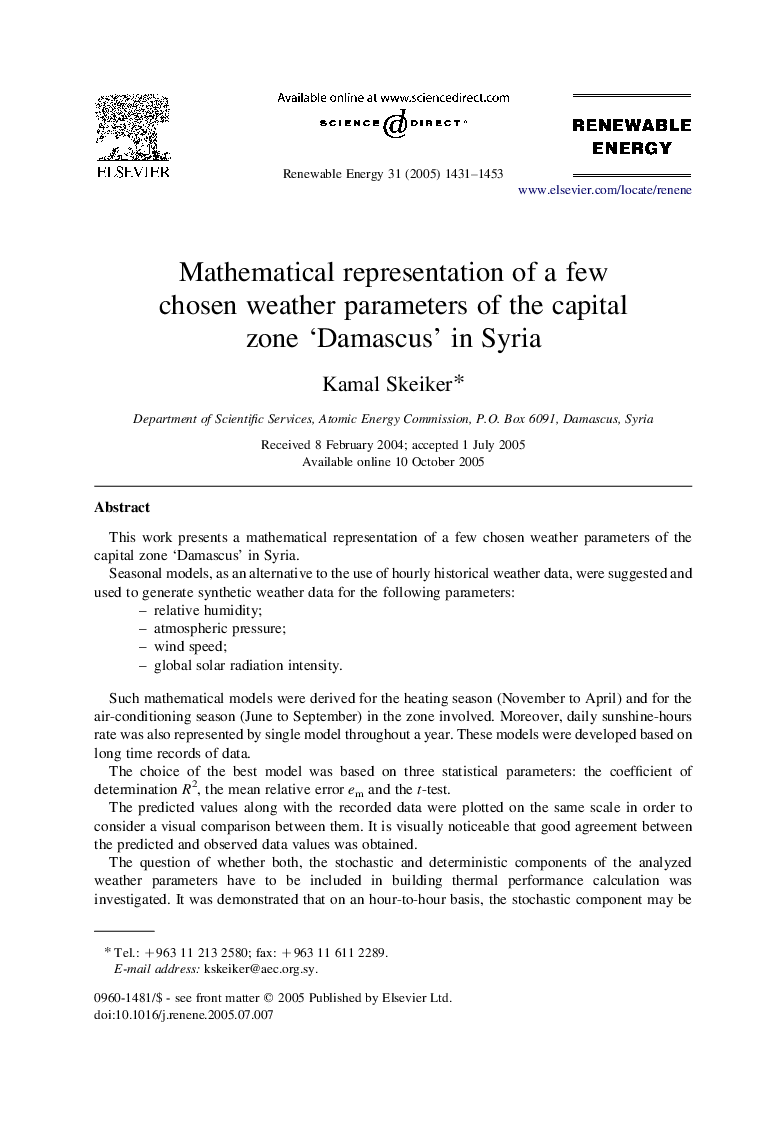| Article ID | Journal | Published Year | Pages | File Type |
|---|---|---|---|---|
| 303108 | Renewable Energy | 2006 | 23 Pages |
This work presents a mathematical representation of a few chosen weather parameters of the capital zone ‘Damascus’ in Syria.Seasonal models, as an alternative to the use of hourly historical weather data, were suggested and used to generate synthetic weather data for the following parameters:–relative humidity;–atmospheric pressure;–wind speed;–global solar radiation intensity.Such mathematical models were derived for the heating season (November to April) and for the air-conditioning season (June to September) in the zone involved. Moreover, daily sunshine-hours rate was also represented by single model throughout a year. These models were developed based on long time records of data.The choice of the best model was based on three statistical parameters: the coefficient of determination R2, the mean relative error em and the t-test.The predicted values along with the recorded data were plotted on the same scale in order to consider a visual comparison between them. It is visually noticeable that good agreement between the predicted and observed data values was obtained.The question of whether both, the stochastic and deterministic components of the analyzed weather parameters have to be included in building thermal performance calculation was investigated. It was demonstrated that on an hour-to-hour basis, the stochastic component may be disregarded in building thermal performance calculations without significantly affecting the results.
